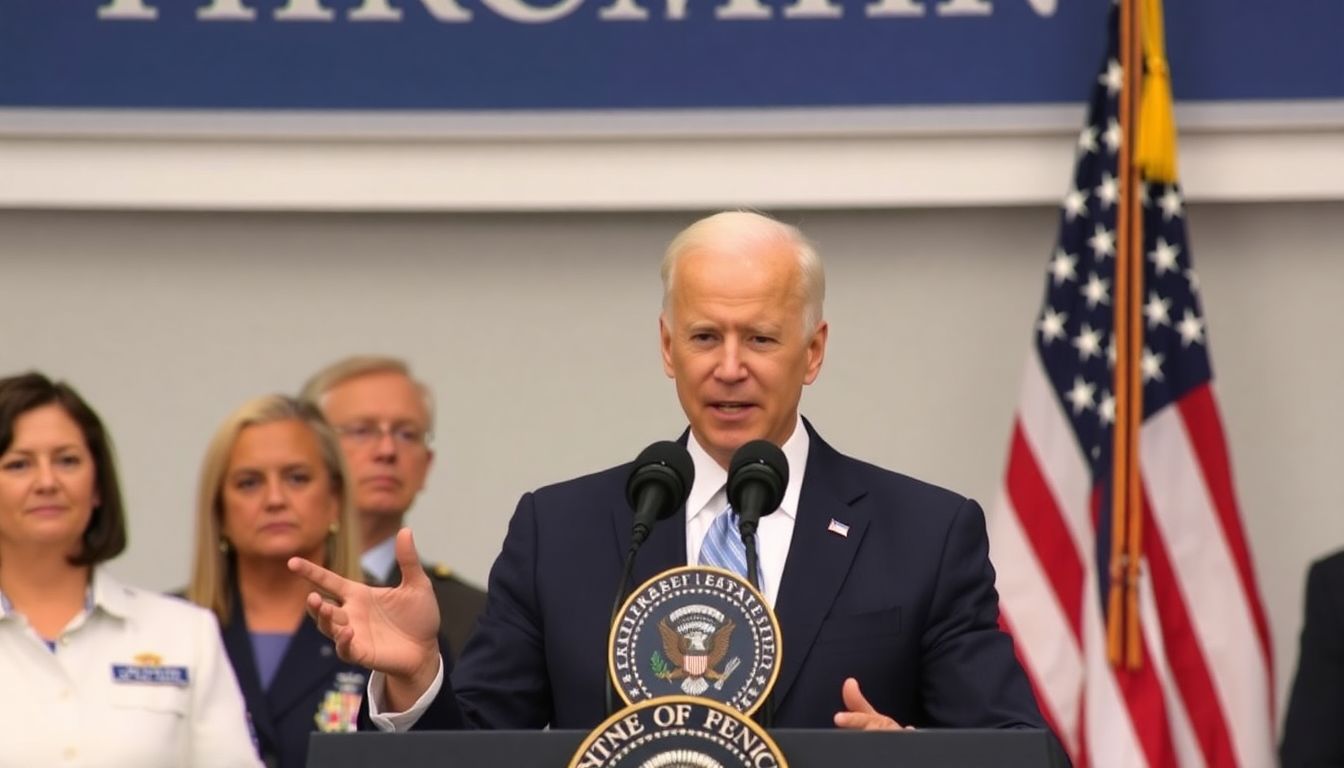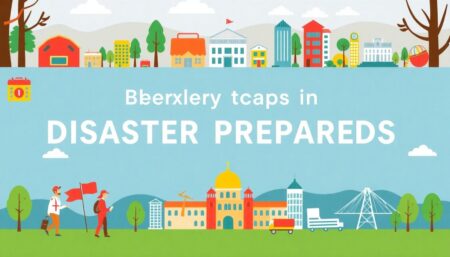Welcome to our detailed exploration of the recent major disaster declaration for North Dakota. This article will guide you through the events, the impact, and the response to the devastating wildfires that swept through the state. Join us as we delve into the specifics of the disaster and the subsequent federal assistance approved by President Joe Biden.
Federal Assistance to Aid Recovery from Devastating Wildfires
In the heart of the crisis response center, President Joe Biden stands resolute, pen in hand, as he signs a crucial document that bears the stark FEMA logo. The atmosphere is tense, yet hopeful, with a backdrop of wildfires raging in the distance, their orange glow a stark contrast to the sterile white of the emergency vehicles lined up outside.
Surrounding the President are a cadre of officials and first responders, their faces etched with determination and exhaustion. These are the people who have been on the front lines, battling the relentless flames, and coordinating the massive effort to keep communities safe.
The document, now signed, is a testament to the federal government’s commitment to supporting the brave men and women who risk their lives daily to combat these natural disasters. It’s a promise of more resources, more support, and a strategic plan to better prepare for and respond to the ever-increasing threat of wildfires.

The Devastating Wildfires
In the early days of October, North Dakota faced an unprecedented challenge as wildfires swept through the state. On Oct. 5-6, raging infernos ignited and rapidly spread, fueled by strong winds and dry conditions. The fires were so intense that two significant blazes merged near the towns of Ray and Tioga, creating a formidable wall of flames that seemed almost unstoppable.
The destruction caused by these wildfires was catastrophic. As the flames danced chaotically, they consumed everything in their path, leaving behind a trail of devastation. Homes, businesses, and vast expanses of farmland were reduced to ashes. The sheer scale of the destruction was overwhelming, and the usually picturesque landscapes were transformed into scenes reminiscent of a post-apocalyptic world.
The impact on infrastructure was severe. Power lines were significantly damaged, leading to widespread outages and disrupting communication networks. Vehicles caught in the path of the fires were left charred and unusable. Perhaps most alarmingly, oil tanks were threatened, posing a potential environmental and economic disaster. The intense heat and unpredictable nature of the fires made it extremely difficult for firefighters to contain the blazes and protect these critical assets.
The response from emergency services was swift and comprehensive. Firefighters from across the region were mobilized, working tirelessly to battle the relentless flames. Despite their best efforts, the merging of the two fires near Ray and Tioga presented a unique challenge. The combined intensity of the blazes required a coordinated and strategic approach. Residents were evacuated, and communities rallied together to support those affected by the fires.

The Federal Response
In a decisive move to bolster relief efforts, President Joe Biden approved the Federal Emergency Management Agency’s (FEMA) major disaster declaration, unlocking a wave of federal support aimed at communities grappling with the aftermath of a catastrophic event.
The approval of the major disaster declaration triggers a cascade of federal assistance designed to complement and amplify state and local recovery efforts. This includes:
-
Individual Assistance:
Helping individuals and households affected by the disaster with grants for temporary housing, home repairs, and other serious disaster-related needs.
-
Public Assistance:
Aiding state and local governments, along with certain non-profit organizations, in their emergency response and recovery efforts.
-
Hazard Mitigation Grant Program:
Providing funds for actions that will reduce or eliminate long-term risk to people and property from future disasters.
To ensure a well-coordinated and effective response, FEMA appointed Robert Little III as the federal coordinating officer (FCO). Little’s role is pivotal in synchronizing the efforts of federal, state, local, tribal, and territorial entities. He is responsible for:
- Overseeing the deployment of federal resources.
- Ensuring the implementation of the approved programs.
- Providing situational awareness of federal efforts to state and local officials.
With Robert Little III at the helm and President Biden’s swift approval of FEMA’s major disaster declaration, the groundwork has been laid for a robust, multi-faceted response. This concerted effort aims not only to address the immediate needs of affected communities but also to fortify them against future disasters, embodying the whole-of-government approach that is a hallmark of FEMA’s disaster management strategy.

The Impact on the Community
The wildfires that have ravaged the countryside have left a trail of devastation that is both heartbreaking and catastrophic. The most profound loss has been the loss of lives, with dozens of fatalities reported, including brave firefighters who battled the blazes and residents who could not escape the swiftly moving infernos. The impact on families and communities has been immeasurable, leaving empty seats at tables and profound grief in the hearts of those left behind.
Beyond the tragic loss of life, the wildfires have also caused widespread destruction of homes and outbuildings. Entire neighborhoods have been reduced to ashes, with thousands of homes destroyed and countless outbuildings, such as barns, sheds, and garages, decimated. Families have been displaced, left to grapple with the loss of not just their homes but also precious belongings and memories. The devastation has turned vibrant communities into stark landscapes of charred remnants and broken dreams.
The financial impact of the wildfires has been immense, particularly for rural electrical cooperatives that serve these areas. The cost of repairing and replacing damaged infrastructure is significant, including:
- Power lines and poles that have been burned or damaged
- Substations and transformers that have been destroyed
- Extensive repair work required to restore electrical service
The financial burden is exacerbated by the need to provide temporary power solutions and the loss of revenue from customers who have been displaced or whose properties have been destroyed. The cooperatives face a long and costly road to recovery as they work to restore power and rebuild their networks.

Recovery and Mitigation Efforts
In the wake of disasters, the federal government offers a robust suite of funding options to support states in emergency work, the repair of damaged facilities, and the implementation of hazard mitigation measures. The Stafford Act authorizes federal disaster assistance, with the Federal Emergency Management Agency (FEMA) playing a pivotal role in coordinating these efforts.
One of the primary funding avenues is the Public Assistance (PA) program. This program provides grants to state and local governments, as well as certain private non-profit organizations, for emergency protective measures, debris removal, and the repair or replacement of public facilities damaged by disasters. The PA program is categorized into seven categories:
- Category A: Debris Removal
- Category B: Emergency Protective Measures
- Category C: Roads and Bridges
- Category D: Water Control Facilities
- Category E: Buildings and Equipment
- Category F: Utilities
- Category G: Parks, Recreational Facilities, and Other Items
Additionally, the Hazard Mitigation Grant Program (HMGP) offers funding to states for long-term hazard mitigation measures following a major disaster declaration. The goal of HMGP is to reduce the loss of life and property due to natural disasters and to enable mitigation measures to be implemented during the recovery from a disaster. Eligible activities include the acquisition or relocation of flood-prone properties, structural retrofits, and infrastructure protective measures.
Moreover, the Pre-Disaster Mitigation (PDM) program provides funds for hazard mitigation planning and projects prior to a disaster event. This proactive approach aims to reduce overall risks to the population and structures, while also reducing reliance on federal funding in the aftermath of disasters. By investing in mitigation efforts before a disaster strikes, states can significantly lessen the impact of future events, saving lives and protecting infrastructure.
FAQ
What caused the wildfires in North Dakota?
What is the role of FEMA in this disaster declaration?
What is the extent of the damage caused by the wildfires?
Who is the federal coordinating officer for the recovery operations?
What steps can be taken to mitigate future hazards?
- Implementing fire prevention measures
- Enhancing emergency response capabilities
- Investing in infrastructure resilience
- Promoting community education and preparedness









